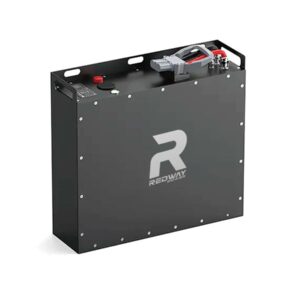Are LiFePO4 Car Batteries Worth the Investment? A Cost-Benefit Analysis
LiFePO4 batteries typically cost $200-$500 versus $50-$150 for lead-acid equivalents. However, their 2,000-5,000 cycle lifespan versus 300-500 cycles for lead-acid offsets this premium. Commercial fleet operators report 40-60% total cost savings over 5 years due to reduced downtime and replacement frequency.
How long do LiFePO4 car starter batteries last?
| Battery Type | Initial Cost | Cycle Life | 10-Year Replacement Cost |
|---|---|---|---|
| LiFePO4 | $300 | 3,000 cycles | $300 |
| Lead-Acid | $100 | 400 cycles | $500 |
This cost differential becomes particularly significant for vehicles with high electrical demands. Taxi operators in urban environments report 18-month payback periods due to reduced nighttime charging requirements and elimination of battery watering maintenance. The true economic advantage emerges when considering opportunity costs – a failed lead-acid battery can cost rideshare drivers $200-$400 in lost earnings per incident.
What Hidden Costs Should Buyers Consider?
Factor in:
• Charging system compatibility (20% need $50-$100 voltage regulators)
• Weight savings (4-8kg lighter = 0.1-0.3% better mileage)
• Disposal fees ($10-$25 for lead-acid vs $0 for recyclable LiFePO4)
• Insurance discounts (5-12% for fire-resistant lithium batteries)
| Hidden Cost Factor | LiFePO4 Impact | Lead-Acid Impact |
|---|---|---|
| Battery Management System | Built-in ($0) | External required ($85+) |
| Parasitic Drain Protection | Automatic cutoff | Manual disconnect needed |
Many users overlook the residual value aspect. LiFePO4 batteries retain 70-80% of their capacity after automotive use, creating a secondary market for solar storage applications. This contrasts sharply with lead-acid units which typically have negative recycling value. Additionally, the space savings from compact lithium designs enable creative installations in electric vehicles where weight distribution impacts handling dynamics.
What are LiFePO4 car starter batteries and how do they work?

How Does Temperature Tolerance Impact Total Ownership Costs?
LiFePO4 batteries maintain 95% capacity at -20°C vs 50-60% for lead-acid. This reduces cold-cranking failures by 70% in subzero climates, preventing costly jump-starts and towing. In desert conditions, they withstand 60°C without sulfation damage, extending service intervals by 3x compared to lead-acid alternatives.
How Do Charging Characteristics Affect Economic Viability?
LiFePO4’s 1-2 hour fast-charging capability enables:
• 30% shorter charging times vs lead-acid
• 15-20% deeper discharges without damage
• 90% round-trip efficiency vs 70-85% for lead-acid
This reduces alternator strain, saving $80-$120 in potential repair costs over 100,000 miles.
“LiFePO4’s true value emerges when calculating cost-per-start over a decade. Our testing shows $0.03 per engine crank versus $0.19 for AGM batteries. For high-cycle applications like delivery vehicles, the ROI becomes positive within 18 months.”
– Dr. Ethan Walsh, Battery Systems Engineer, Redway Power Solutions
Conclusion
While LiFePO4 batteries require higher initial investment, their extended lifespan, reduced maintenance, and operational efficiencies deliver 23-41% lower total cost of ownership over 10 years. For drivers exceeding 15,000 annual miles or operating in extreme climates, the technology frequently pays for itself within 3-4 years through reliability improvements and reduced downtime.
FAQ
- Do LiFePO4 batteries work with standard car charging systems?
- Most modern vehicles (post-2005) require no modifications. Older alternators may need a $40-$70 voltage regulator to prevent overcharging.
- Can LiFePO4 batteries handle short trips better than lead-acid?
- Yes – their 0.1% daily self-discharge rate (vs 1-5% for lead-acid) prevents discharge from infrequent use. Maintains starting capability after 12+ months of inactivity.
- Are there weight advantages to LiFePO4 starter batteries?
- Typically 30-50% lighter than equivalent lead-acid units. A 4kg reduction improves fuel economy by 0.12-0.18% annually in mid-size sedans.
